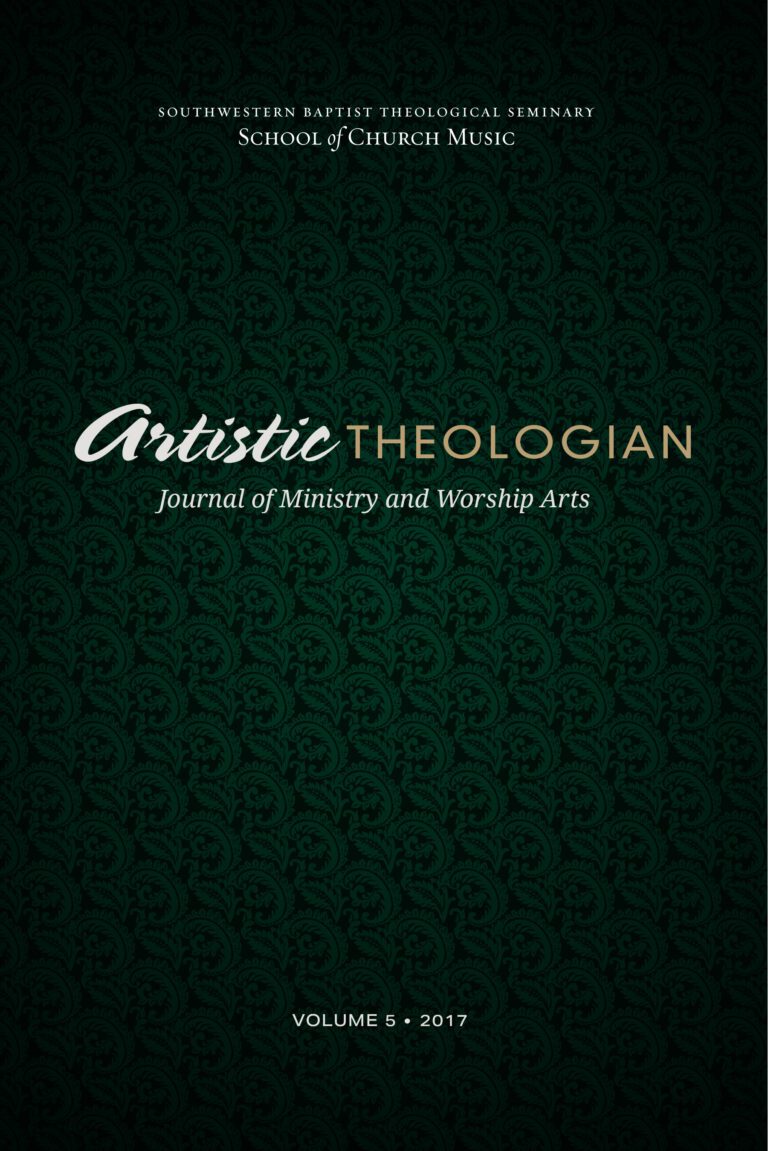
Forming Disciples through Corporate Worship
Artistic Theologian
Volume 5, Summer 2017
Editor-in-Chief: Scott Aniol
Jonathan Edwards on Worship: Public and Private Devotion to God, by Ted Rivera. Eugene, OR: Pickwick Publication, 2010. 175 pp. $22.
What did worship look like in churches around the time of the First Great Awakening? Ted Rivera, associate professor of religion at Liberty University and PhD graduate from Southeastern Baptist Theological Seminary, attempts to answer this question. In Jonathan Edwards on Worship: Public and Private Devotion to God, Rivera discusses major themes that are found throughout Jonathan Edwards’s personal writings, letters, and sermons to determine Edwards’s views on public and private worship in a systematized fashion. Rivera argues that Edwards’s worship practices can be divided into three distinct categories: public worship, self-examination, and private devotion. Within these three categories, self-examination acts as a bridge between public worship and private devotion.
Rivera begins his book with a brief historical introduction regarding various opinions on Jonathan Edwards. The introduction also contains a small section regarding Puritan worship within the New England area and how Edwards’s writings provide a skeletal structure as to how Puritan worship was formed within their worship services.
Part one focus on the aspect of public worship in Edwards’s church. One of the first things Rivera does in this section is create an historical context for the reader to help him understand the worship practices through the filter of an eighteenth-century New Englander. Part two discusses the self-examination aspect of worship. Rivera discusses why this is the bridge between public and private worship. A great portion of the book is spent in these first two sections, and the author concludes with part three, private devotion. According to Rivera, this progression shows that Edwards believed worship began with public worship; the process of self-evaluation bridged the gap to help the congregant to draw closer to God, which leads to private devotion.
The book concludes with a brief section summarizing the way Rivera systematically works through Edwards’s thoughts brought forth within his writings. Within this conclusion, a thoughtful comparison of worship practices between the Puritans and modern-day churches is included, allowing the reader to reflect on the differences in a convicting manner.
To support his arguments, Rivera begins with a lengthy section on public worship in which he discusses various attributes of what worship services looked like under Edwards’s leadership. One attribute he discusses is Edwards’s preaching style, which was dry in its delivery. He quotes Edwards saying, “I think I can write better than I can speak” (27). Rivera concludes this section by mentioning Edwards’s primary concern was biblically sound preaching. Without the preaching of the Word the worship service would be without meaning or “hollow” (29). These pictures of worship within Edwards’s church helps one see the importance of Scripture in the Christian’s daily walk. This foundation then influences the individual in his self-evaluation and private devotion.
Among Edwards’s writings, the act of self-examination is discussed a great amount. Rivera chose to focus on this aspect in public and private worship more than the others because it is “the bridge between public and private acts of worship” (75). At this point, Rivera helps his modern reader to see more accurately what a worship service with Edwards would have looked like, a long tedious service in an unheated building. This is far removed from what most modern worshipers are used to today. To add to this uncomfortable environment, many times aspects of the service would have included times of self-examination. This was especially common during times of communion, but it was not limited to this time. Some critics would argue that too much self-examination could be harmful. The danger is that one is constantly uncertain of his salvation, which creates a lack of assurance in the believer. He mentions Karl Barth’s statement that “it is a bad theology which has no assurance of salvation.” However, Rivera defends Edwards. While this practice could cause uncertainty of salvation, it encouraged true believers because they could consider the work that has been done in them through their conversion (78). Rivera further defends Edwards by saying, once true believers have examined themselves, they have no choice but to put their faith in Christ that he has redeemed them from their sinfulness (79).
This book is easy to read, written in a way many can understand. Rivera also does a good job writing the book in a way the modern reader can better interpret Jonathan Edwards’s writings through the lens of an eighteenth-century New Englander. This book also gives validation for self-examination and its importance in the Christian life. It has practical aspects for the modern church as well. Common things seen in many houses of worship today are addressed from coffee shops to concert-like worship services. This book’s approach helps modern worshipers to consider what Edwards and many like him would think about churches today.
While the book concludes on a practical note, it falls short in explicitly supporting its thesis. Rather, the reader may implicitly realize that worship based around Scripture, leading to self-evaluation, will naturally affect how one worships God on the private level. This implicit conclusion may be realized in the amount of Edwards’s spiritual discipline brought to light within the private devotion part of the book.
This book would be a great addition to anyone interested in the worship practices of Jonathan Edwards and how self-evaluation played a role in his worship services. Pastors, church leaders, students of religion, and lay people can all benefit from reading this book.
Jessie C. Wigginton
Southwestern Baptist Theological Seminary





